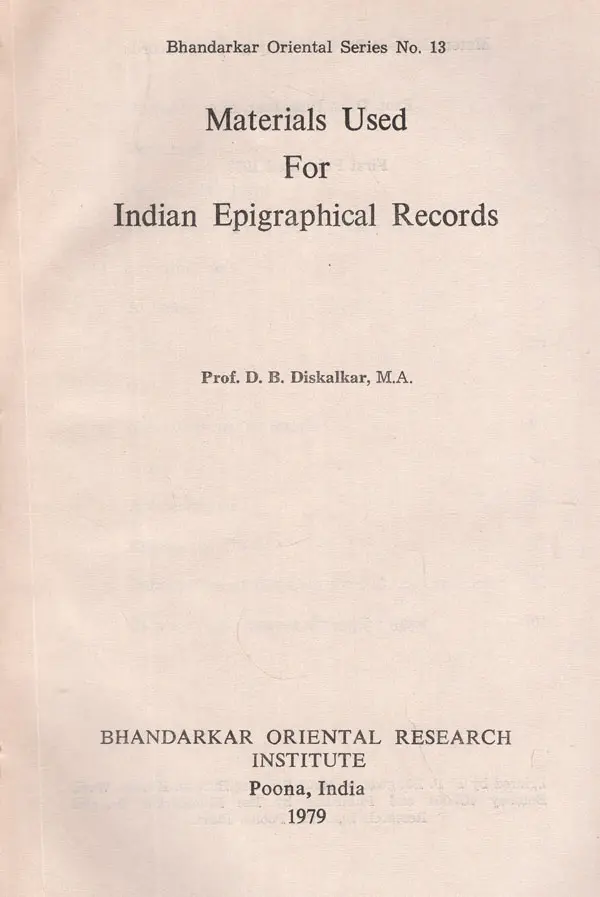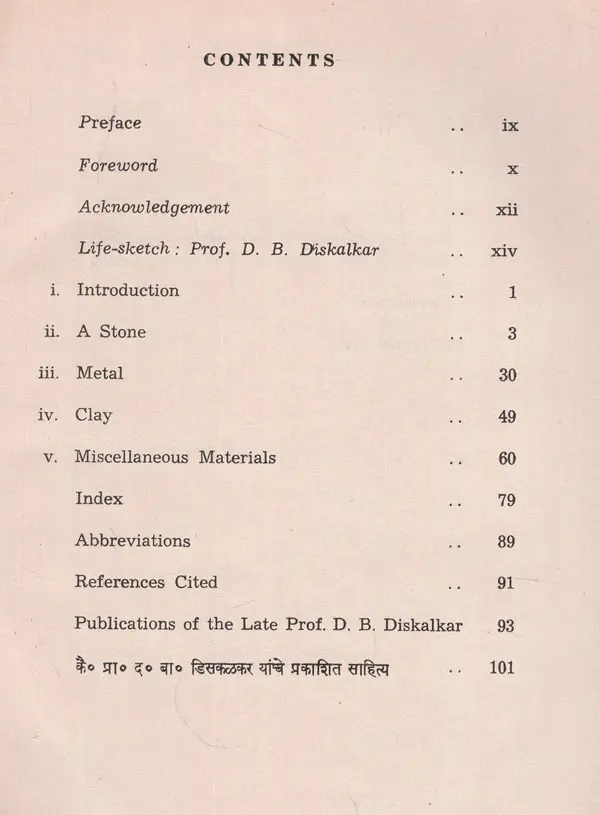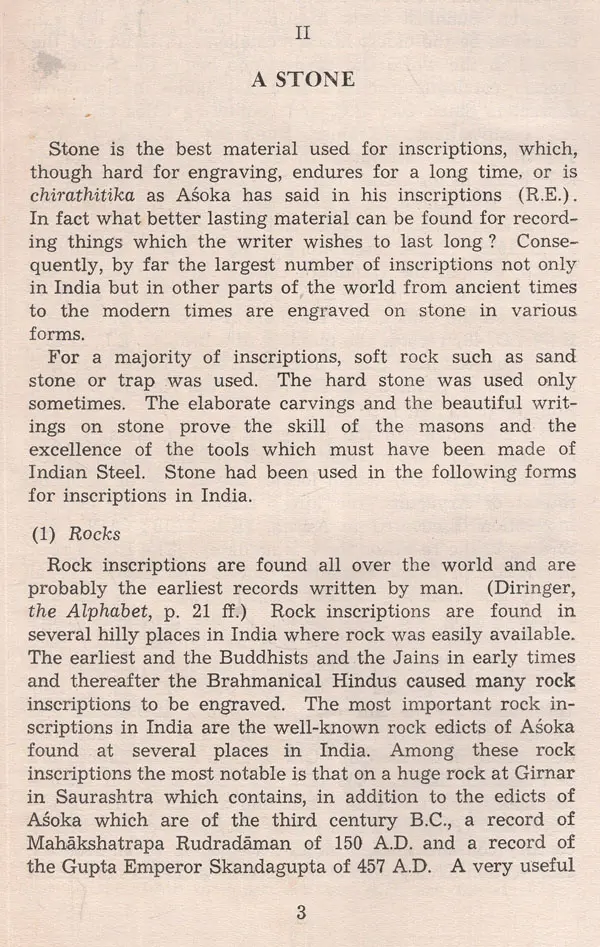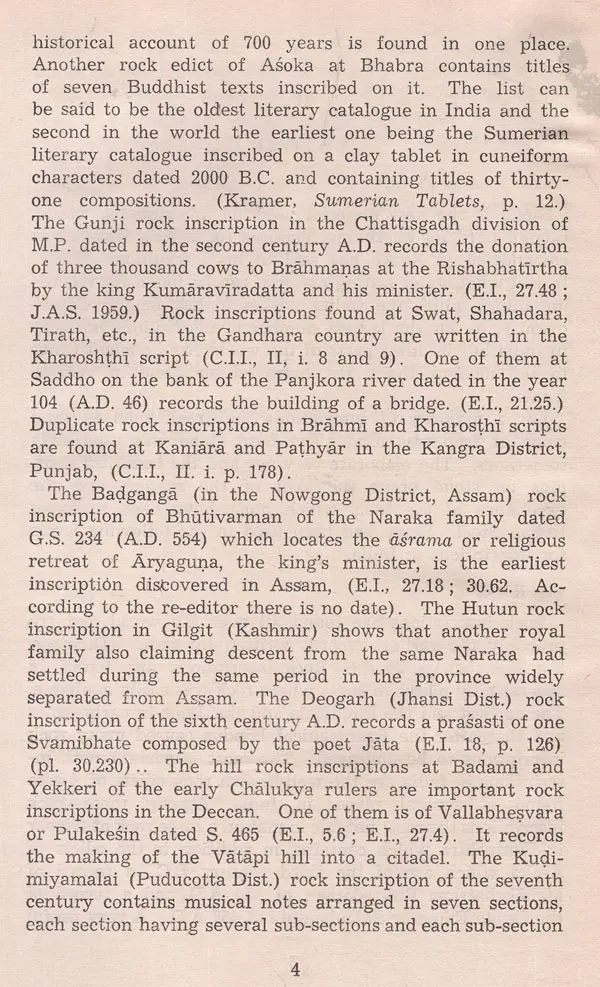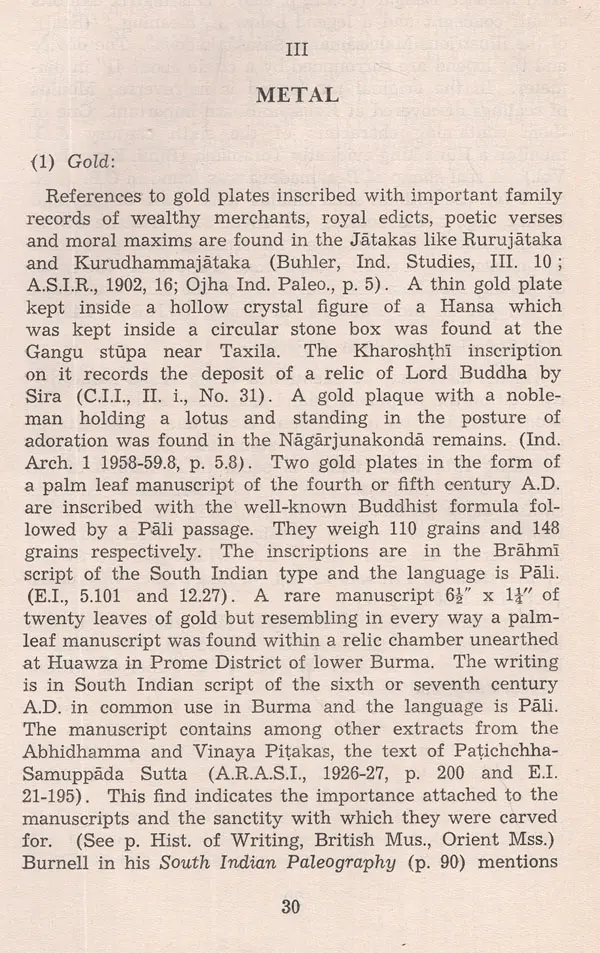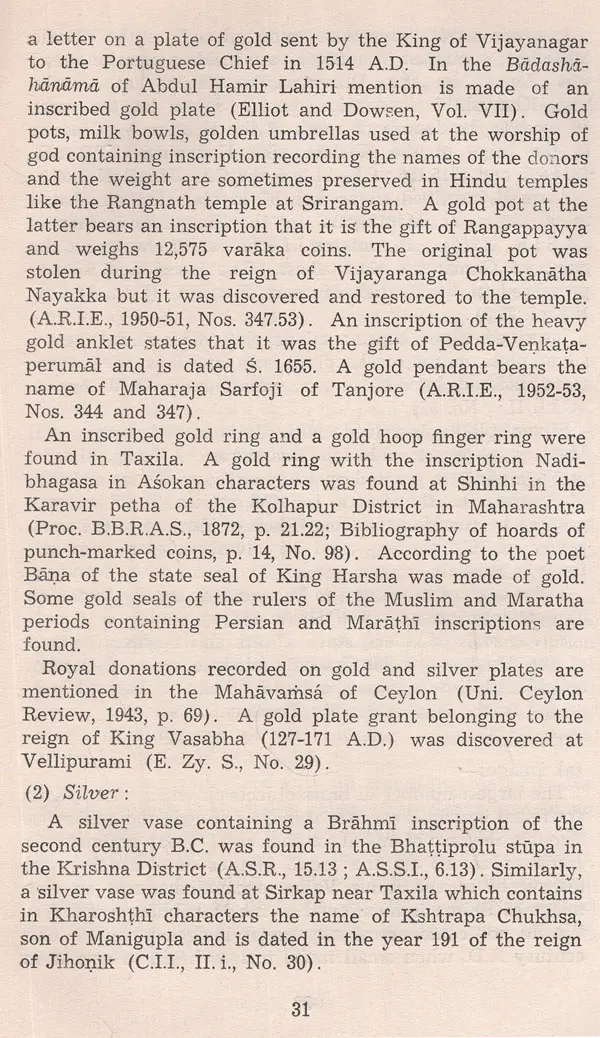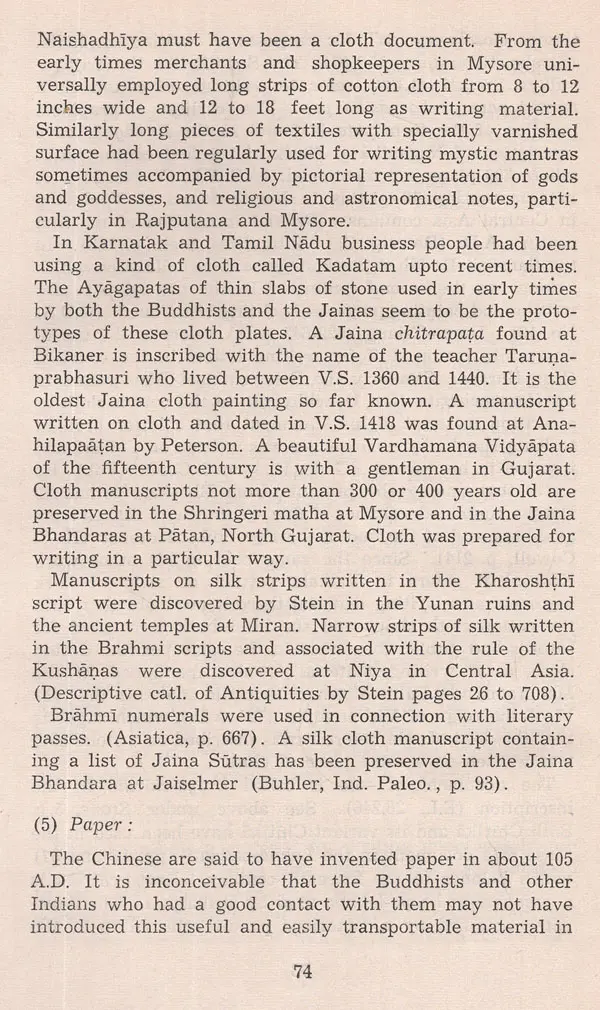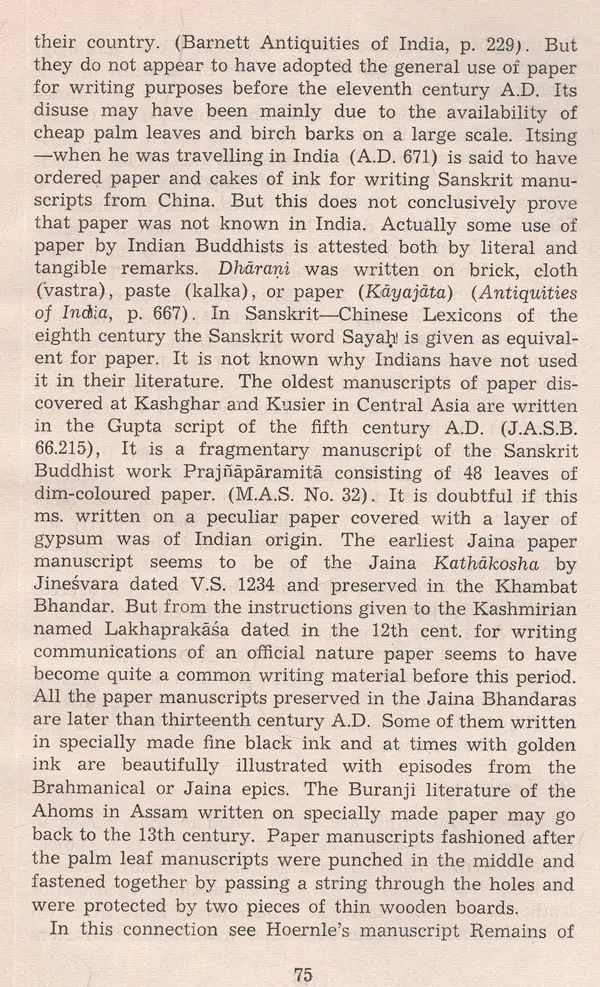
Materials Used For Indian Epigraphical Records (An Old and Rare Book)
Book Specification
| Item Code: | UAN374 |
| Author: | D. B. Diskalkar |
| Publisher: | Bhandarkar Oriental Research Institute, Pune |
| Language: | English |
| Edition: | 1979 |
| ISBN: | 978819424382 |
| Pages: | 101 |
| Cover: | PAPERBACK |
| Other Details | 8.50 X 5.50 inch |
| Weight | 160 gm |
Book Description
Many years ago, the late Shri D. B. Diskalkar delivered, under the auspices of the University of Bombay, a course of lectures on the "Materials used for Indian Epigraphic Records". When some of those lectures were first published as independent papers in different research journals they had evoked considerable appreciation from knowledgeable scholars. It was felt, even then, that if all those lectures were published in a book-form they would serve as a useful introduction to the study of an important aspect of Indian Epigraphy. But, unfortunately, that did not become possible until recently when his sons decided to take upon themselves to get the book printed. While congratulating them on their sense of filial duty, the Bhandarkar Oriental Research Institute has great pleasure in including this unpretentious but meritorious monograph in its "Bhandarkar Oriental Series'..
The late Shri Diskalkar was by no means a stranger to the Bhandarkar Oriental Research Institute. For many years he used to have constant academic contacts with the workers of the Institute and also occasionally contributed articles on Indian inscriptions to the Institute's research journal, the Annals. Later, in 1953-54, in recognition of attainments in the field of Indian epigraphy and ancient Indian history, the Institute appointed him on the staff of its Post-graduate and Research Department.
I am glad that these old associations are, in a sense, being revived through the publication of this book.
I am much beholden to Professor Dr D. C. Sircar, the doyen of Indian epigraphists, for his kind Foreword.
The late Shri D. B. Diskalkar had already established his reputation as an energetic student of West Indian inscriptions years before I was a student in the Post Graduate Department of Ancient Indian History and Culture, University of Calcutta, during the period 1929-31. He edited a number of valuable inscriptions in various periodicals, no less than ten of them, in the Epigraphia Indica, published by the Archaeological Survey of India. The earliest of his papers in this journal was on the Betma plates of Paramara Bhoja, dated Vikrama-Samvat 1076, appearing in Vol. XVIII (1925-26), pp. 320-25, while the latest, written jointly with the late Shri M. S. Vats and published in Vol. XXV (1939-40), pp. 292-96, was on the Anjaneri plates of Gurjara Jayabhata III, dated in the Kalachuri year 461. These are interesting inscriptions.
Diskalkar delivered a series of lectures on the materials utilised in engraving epigraphic records. When these lectures were published as independent articles in different journals, he was good enough to send their off-prints to a few students of epigraphy including the author of these lines and also to ask for our suggestions with a view to improving his treatment of the topics. This was particularly because he expected to get the articles published in a book form in the near future. Unfortunately he died before this could be arranged. Students of Indian epigraphy and early Indian history must now feel grateful to the Bhandarkar Oriental Research Institute for publishing Diskalkar's lectures in the present volume.
The materials on which Indian epigraphical records were incised are of various kinds which show the popularity of the art of writing with ancient Indians. They divide themselves into three main categories of stone, metal and clay -with a number of kinds of each of them. But sometimes miscellaneous materials like crystal, ivory, conch-shells, tortoise shells and wooden boards, etc., were also used. Writings on flexible materials such as papyrus scrolls, pieces of skin, silk cloth, birch-bark or palm-leaves or even on paper, though they are often included in a separate class of manuscripts or archives, sometimes possess great epigraphical importance, when they belong to an ancient period. An inscription, as the term implies, is almost always incised or engraved on a more or less hard material by a stylus but occasionally it is painted with a colour or written with ink or chiselled on hard material or stamped on clay. Such writings or pictures and paintings with ink or graffite or casual scratchings on rocks, cave walls, metal vases and plates, potsherds or wooden boards also form a peculiar class of epigraphical material. Similarly, the legends on ancient coins, rings and gems though their treatment falls under a special class called Numismatics are closely connected with inscriptions and form in many cases an important epigraphical material especially for the early period.
In the early history of Indian epigraphy we find various kinds of materials used for inscriptions. But in its later period only stone and metal were used, the former in the form of slabs and the latter in the form of sheets. The number of stone slab inscriptions is again very much larger than that of copper plate inscriptions.
**Contents and Sample Pages**
